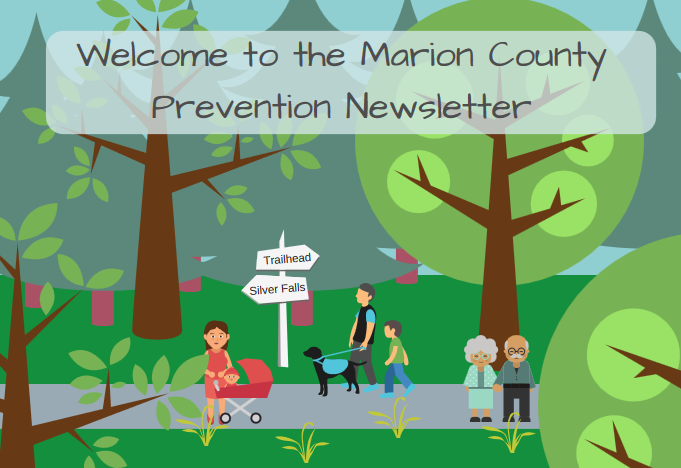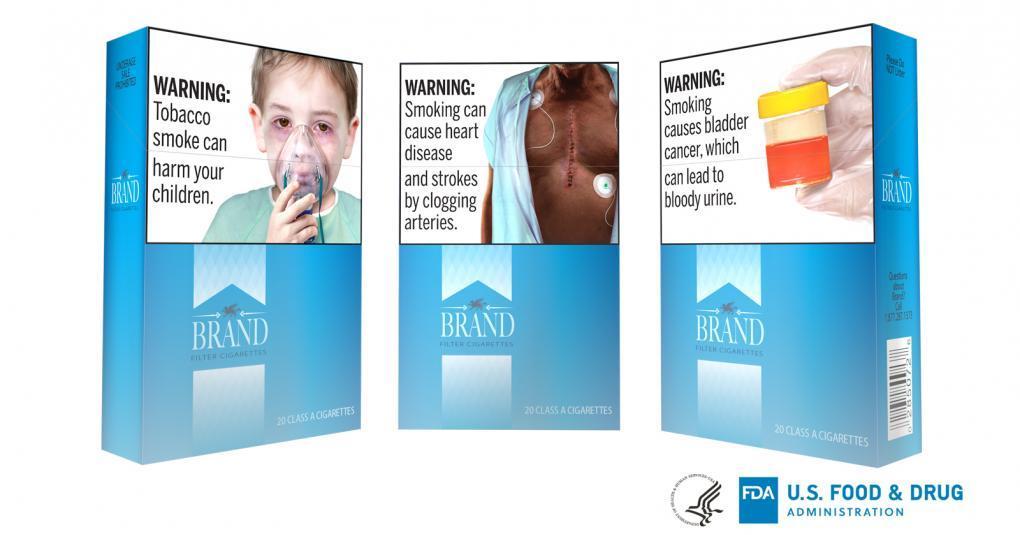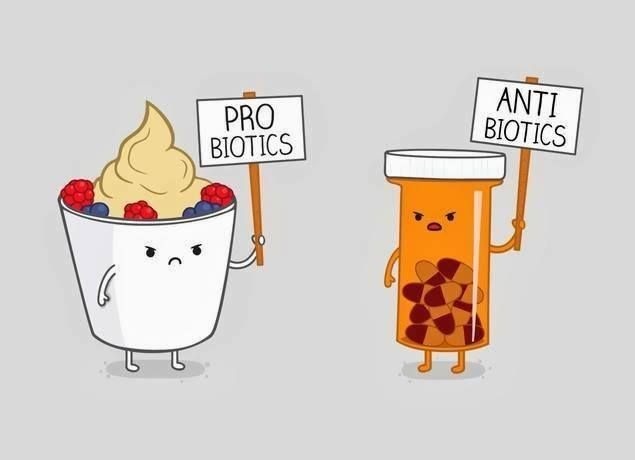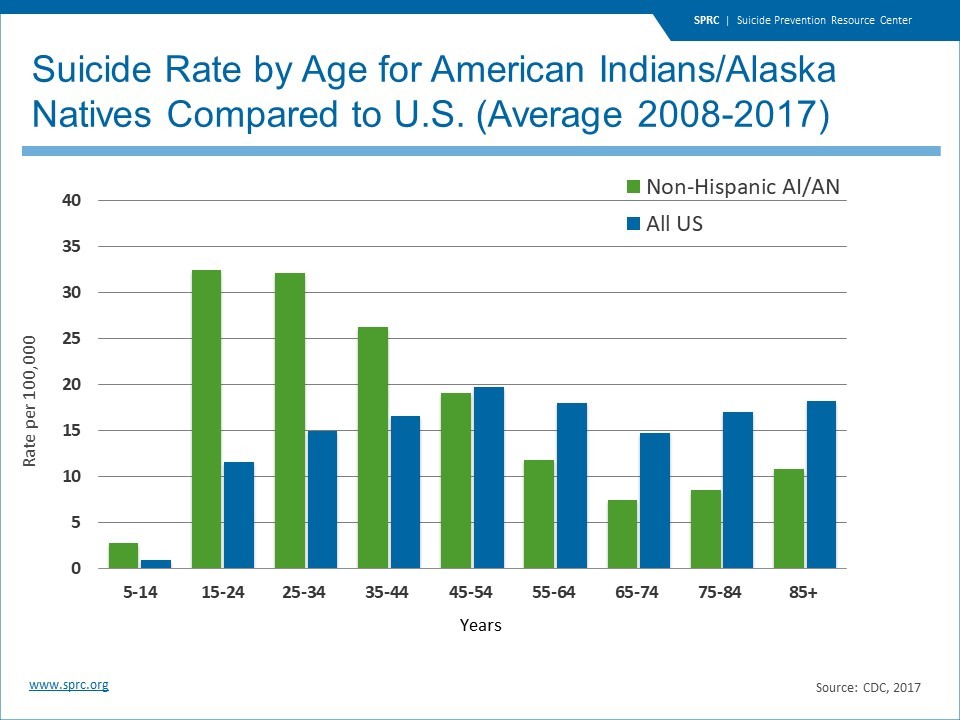
We hope to increase communication with our many diverse partners within Marion County and in the community. Each quarter we highlight selected programs, share information about events & resources, and share ways you can be involved in healthy local activities. Whether you are a business owner, parent, educator, advocate, provider, or just interested in your community, we know you will find something to inspire you.
What's in this Article

Marion County's Problem Gambling Prevention Program is applying for funding to increase awareness about problem gambling, and we need your input. Please take 3-5 minutes to fill out our short survey. Go to www.surveymonkey.com/r/RaisingAwareness2019.

September 7th, 2019
 Weekend Bus Service is Back in Salem & Woodburn!
In Salem, Cherriots will have Saturday bus service starting September 7th. In addition, Saturday bus service throughout September will be FREE. To celebrate, Cherriots will have a party on Saturday, September 7th at the Downtown Transit Center from 10:00am - 4:00pm. For more information, go to www.cherriots.org/better
In Woodburn, weekend bus service will be starting September 7th as well. Buses will run
- Saturday: 9:00am - 5:00pm
- Sunday: 9:00am - 3:00pm
For more information, visit www.woodburn-or.gov/transit
____________________________________
Sept. 28th, 2019
 Out of the Darkness - Walk to Fight Suicide
September is National Suicide Prevention Month. Join us on Sept 28th from 9:00am - 12:00pm for Salem Oregon's 4th Annual Out of the Darkness Walk for Suicide Prevention. This walk is FREE.
When you participate in the Out of the Darkness Walks, you join the effort with hundreds of thousands of people nationwide to raise awareness and funds that allow the American Foundation for Suicide Prevention to invest in new research, create educational programs, advocate for public policy, and support survivors of suicide loss. Thanks to walkers like you from cities across the country, AFSP has been able to set a goal to reduce the annual suicide rate 20% by 2025.
Marion County Health & Human Services will have a booth at the walk with resources and information on how we are preventing suicide in the Mid-Willamette Valley.
For more about suicide prevention, go to www.afsp.org, www.suicidepreventionlifeline.org, and www.mvsuicideprevention.org.
____________________________________
Sept. 28th, 2019
School Immunizations for Uninsured Students

Marion County will be offering FREE or low-cost school immunizations for children (ages 0-18) with no health insurance on September 28th from 10:00am - 3:00pm at Marion County Health & Human Services (3180 Center. St. NE Salem). FREE bus rides are also available through Cherriots on September 28th. |
|
 |
No appointments are needed, but a parent or guardian must sign for children under 15. Sign up assistance for the Oregon Health Plan and COFA Premium Assistance Program will also be provided. Please bring your immunization record.
For more information, go to www.co.marion.or.us/hlt/ph/immunizations.
____________________________________
November 21st, 2019
 Great American Smokeout
Quitting smoking isn’t easy. It takes time. And a plan. You don’t have to stop smoking in one day. Start with day one. Remember, tobacco addiction is both mental and physical. For most people, the best way to quit will be some combination of medicine, a method to change personal habits, and emotional support.
Make a plan. Get support. Lead a healthier life. Visit www.cancer.org/healthy/stay-away-from-tobacco/guide-quitting-smoking for resources to help yourself or someone you love quit smoking. Need more information? Click the link below for more details.


SATURDAY Salem Market: Now thru October 26 ~ 9 am to 3 pm, 865 Marion St. NE
MONDAY Salem Hospital Market: Now thru September 30 ~ 9:30 am to 1:30 pm, Salem Hospital
WEDNESDAY Salem Farmers Market: Now thru September 11 ~ 9:30 am to 1:30 pm, Courthouse Square Plaza, near Chariots Bus Transit Station
THURSDAY W. Salem Farmers Market: Now thru September 12 ~ 9:30 am to 1:30 pm, 1260 Edgewater St NW
SATURDAY Silverton Farmers Market: Now thru October 12th, 9am - 1pm, Town Square Park, corner of Main and Fiske
THURSDAY Mt. Angel Wochenmarkt: LAST DAY September 5th, 9am - 1:30pm, near Mt. Angel Library
Know of another Farmers Market in Marion County? Send us an email with their contact information at MCHDPrevention@co.marion.or.us.
 |
|
The surgeon general issued an advisory August 29th cautioning young people and pregnant people against using marijuana, warning it poses risks to developing brains.
HHS officials said the best science available suggests no amount of marijuana use during pregnancy or for youth is known to be safe. Surgeon General Jerome Adams' advisory was the first his office issued on marijuana since 1982, and it comes as more states legalize the drug for recreational or medical use.
|
The Oregon Health Authority released a statement supporting the Surgeon Generals' advisory, as well as additional resources to support parents, pregnant women, and youth.
Sports Betting in Oregon
In May 2018, the United States Supreme Court struck down the Professional and Amateur Sports Protection Act – the federal law banning sports wagering nationwide. This means each state can now set its own laws regarding sports betting. Since it was overturned, some states have been using sports betting to increase state revenues. In Oregon, the Oregon Lottery will be releasing a sports betting application for mobile phones sometime during the 2019 NFL Season. While the application will most certainly raise additional revenue for the state, increased availability of gambling carries with it risk of increased gambling problems in our communities.
 |
Problem gambling and disordered gambling are similar to alcohol and drug addictions in many ways. Disordered gambling shares the DSM-5 classification of a Substance-Related and Addictive Disorder with alcohol and drug addictions. Those at increased risk of developing addictive disorders at some point in their lifetime are kids and teenagers who regularly engage in the activity, people with family history of a problem, and increased exposure to pro-use messaging. 2.4% of Oregon Adults are estimated to be disordered gamblers, and 5.6% of Oregon Adults are estimated to be at risk of developing a gambling disorder – showing signs of problem gambling.
What does this all tell us? Prevention is key! As an adult, understanding the risks, knowing the true cost of gambling, and how to gamble responsibly are helpful to set responsible gambling guidelines. Refer to www.OPGR.org to understand risks and guidelines, and www.oregonlottery.org/play-responsibly to calculate expected losses on a budget.
Additionally, promoting abstinence for kids and teenagers will also help reduce the risk of gambling problems throughout their lifetime. If you would like a Marion County Health Educator to do a presentation to a classroom or youth group, please contact Marion County Health Promotion & Prevention at 503-576-2867 or MCHDPrevention@co.marion.or.us.
__________________________________
Video Games: Loot Boxes & Problem Gambling
|
It is estimated that video gamers worldwide spent $30 billion on loot boxes in 2018. That amount is projected to reach $50 by 2022. So.. what is a loot box and why is it a concern? A loot box is a mystery box in video games players can buy that contains a random game item or upgrade. Players spend real money on a chance of getting something valuable in the game. Many video games on mobile phones and consoles have loot boxes.
Dr. David Zendle, one of the world’s leading experts on harms present in loot boxes, explained to the Federal Trade Commission
|
|
 |
on August 8th, 2019 that “spending money on loot boxes is linked to problem gambling.” He states that while more research is needed to determine if loot boxes cause problem gambling, problem gamblers do spend more money on loot boxes than non-problem gamblers.
Most alarming is that 1/3 of children aged 11 to 15 had opened loot boxes, and children and adolescents “are particularly vulnerable or susceptible to the development of gambling problems.”
In response to the growing link of problem gambling to loot boxes, Belgium and the Netherlands ruled that some types of loot boxes are considered gambling. In the United States, US Missouri Senator Josh Hawley introduced a bill to ban loot box sales in video games to minors. Additionally, Microsoft, Sony, and Nintendo recently stated they will require video games to disclose the odds of acquiring items.
Tobacco Products; Proposed Required Warnings for Cigarette Packages and Advertisements
FDA Proposes New Cigarette Pack Graphic Warning Labels On August 15th, the FDA released a new proposed rule requiring graphic health warnings on cigarette packages with a series of thirteen proposed images, each paired with warning text. If approved, these warnings will cover the top 50% of both the front and back panels of cigarette packs as well as at least 20% of the top area of cigarette advertisements. They would mark the first major change to cigarette packs since the Surgeon General's warning was added over 35 years ago. To learn more and submit comments go to FDA Cigarette Health Warning.

__________________________________
2019 Legislation; House Bill 2270
|
The 2019 Oregon Legislature sent House Bill 2270 to public vote in November 2020. This bill was intended help close the funding gap in the state health budget and put Medicaid on a sustainable funding path. Within the bill includes an increase in the cigarette tax by $2.00 a pack, and extends the tax on other tobacco products to inhalant delivery systems (e-cigarettes).
Learn more about HB 2270
|
|
 |
__________________________________
Woodburn's City Parks Will Soon Become No-Smoking Areas
|
On Monday, Aug. 12, Woodburn City Council passed an ordinance "prohibiting tobacco use, smoking and the use of inhalent delivery systems in Woodburn city parks."
Mayor Eric Swenson signed the ordinance on Friday, Aug. 16, and it goes into effect on Saturday, Sept. 14.
The council received a no-smoking
|
|
 |
request from a Woodburn resident during its June 24 meeting. The panel then directed city staff to investigate how other cities in Oregon address smoking in parks.
A handful of those Oregon cities on the list were in the Willamette Valley, including Mount Angel, Silverton, Stayton, McMinnville, Dayton, Sherwood, Tualatin and Independence.
The ordinance is intended to be straightforward by broadly defining smoking and prohibiting all tobacco use. Violation of the code carries a class 4 civil infraction, penalty for which is a fine of $125.
 Legion Park in Woodburn
Within the ordinance's definitions, vaping was included in the prohibition, while city parks are defined as "land controlled by the City that is available to the public and used for municipal park purposes." Tobacco product is defined as any product that contains tobacco or nicotine, or is derived from tobacco or nicotine.
Signs will be posted at the parks to provide public notice.
It is important for us to de-stress and take a deep breath, relax, and laugh. We hope this helps brighten up your day!

Health Equity for All: Suicide & Native American Youth
Each quarter, Marion County Health Promotion & Prevention will provide insight into a population that is increasingly susceptible to health inequities. The hope is to educate our various partners and frame an issue in population health in a positive way. See below this quarters segment of Health Equity for All - Suicide & Native American Youth.
 This article was shortened. Go to store.samhsa.gov/system/files/sma17-5050.pdf to view the entire SAMHSA study
|
|
American Indian and Alaskan Native (AI/AN) communities have strikingly higher suicide rates compared to the overall U.S. population. In 2010, the CDC reported suicide as the eighth leading cause of death among AI/AN, at a rate of 16.93/100,000 compared to an overall U.S. rate of 12.08/100,000.
Yet unlike the general U.S. population, in which suicide rates increase with age, suicide rates decline with age for AI/AN. The IHS Trends in Indian Health report (2014) identified suicide as the second leading cause of death for AI/AN youth between the ages of 5 and 24 years old. This same report indicated that the adjusted suicide rate for AI/AN individuals between 15 and 24 years old was 39.7 per 100,000 compared with the U.S. all-race rate of 9.9 per 100,000. The data in the report underscores the vulnerability of 15-24 year old AI/AN males, whose adjusted suicide rate of 58.7/100,000 was more than three and a half times the suicide rate for males of all races in that age group (16.0/100,000). While the adjusted suicide rate for AI/AN females in that age group was lower than males (20.2/100,000), it was still nearly six times the rate for females of all races(3.5/100,000).
|
|
|
|
 |
Statistics Provided by Suicide Prevention Resource Center, www.sprc.org/racial-ethnic-disparities
|
AI/AN high school students also have higher rates of serious thoughts of suicide, suicide plans,and suicide attempts overall, with AI/AN females having higher rates of these behaviors than AI/AN males. In the 2011 Youth Risk Behavior Survey, nearly 30 percent of AI/AN females reported serious thoughts of suicide compared to 14.3 percent of AI/AN males, and over a fifth of AI/AN females indicated they had made a suicide plan compared with 14.2 percent of AI/AN males. Nearly 20 percent of AI/AN females reported attempting suicide, compared with 7.9 percent of white females and 10 percent of AI/AN males. Studies indicate that AI/AN living on reservations or in rural areas have a higher prevalence of suicidal behaviors than those living in urban areas.
Increasing protective factors has been found to reduce the risk of suicidal behaviors. Strong social support, such as a supportive family, can serve as a buffer against the development of suicidal behavior and can offset the risks associated with relationships between vulnerable individuals. Other protective factors against suicide and suicide attempts include school completion, a commitment to tribal spirituality, a sense of cultural belonging, family satisfaction and connectedness, and other community level factors.
|
|
|
|

Everyone can make a difference! QPR is a suicide prevention class where people will learn the warning signs of someone that may be contemplating suicide and what one can to get someone help.
Like CPR, QPR is a simple process that anyone can be trained to use, to help save the life of a person who is in crisis. During the FREE two hour training, participants will learn:
- Myths and facts about suicide
- How to recognize the signs that a person may be suicidal
- How to ask Questions to assess the situation
- How to Persuade the person to stay alive long enough to get help
- How to Refer them to a professional for help to get them through the crisis and treat any underlying mental illness
Visit www.MVsuicideprevention.org to sign up for a class or request one for your organization.
For more information on suicide prevention or to talk to someone to get help, visit the National Suicide Prevention Lifeline at suicideprevetionlifeline.org or call them at 1-800-273-8255
 End of summer transitions are always hard for families with young kids and college students alike. Don’t forget as everyone moves off to new school routines, that Parenting doesn’t stop. With all the information out there about young adult drinking, vaping, and marijuana use, it’s more important than ever to continue to guide your child. Even in college, they need you and they listen.
But, it’s good to think about the best ways to keep communication open and continue to offer guidance and support for your family values. Here’s are some great tips from Screenagers about social media and ways to communicate.
College and other transitions, social media help or hurt?
Transitions are challenging—from entering a new summer program to starting a new school to going off to college. Youth are facing these transitions with new forms of communication and self-presentation—yep, you got it...social media platforms. These platforms can both help and hinder these transitions and that is what I want to discuss today.
When it comes to getting new roommates, youth often use social media to do some pre-meeting investigation and connection. I know of teens who said they were already “friends” with their roommate before they ever met because of the cyber-snooping and SnapChatting they did over the summer. They felt having this friendship made the transition more comfortable.
Others have told me that this preconceived idea of who this new person was made them anxious about the upcoming transition because they didn’t like or felt intimidated by what they saw on the roommate's social feeds. My son Chase, after a gap year, is heading off to college next month and the university has a policy not to reveal roommate assignments before everyone gets to campus. The policy is written as such: “We have found that roommate relationships are more positive and successful when they start out with face-to-face interaction, rather than on preconceived notions based on fragments of information or online communications.”
How our teens decide to present themselves online as they enter new social worlds, and how often they take risks to meet potential friends, is a topic definitely worth discussing with our youth, even if they are just 7 years old. Here are some questions to get the conversation going.
- How has technology helped you stay in contact with people you care about?
- What are the upsides and downsides of so much ability to stay in touch with people?
- How often are you surprised how different someone is in real life than on social media?
- When was the last time (including you adults) that you took a risk and asked someone to hang out? How did it go?
You can find more tips on technology use at:
www.screenagersmovie.com/tech-talk-tuesdays
www.commonsensemedia.org
|